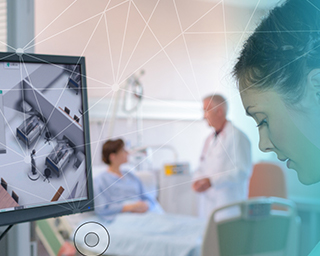AI in the health sector: From individual diagnosis to cohort analysis
Central to AI-enabled health research is the consideration of how humans can ultimately make full and proper use of the data generated and processed by artificial intelligence. Visual computing technologies are an essential component of this. For many years now, Fraunhofer IGD has been using machine learning and artificial intelligence methods and procedures to analyze and evaluate vital data, health data and disease-related patient data. These techniques include AI-based medical image processing, visual cohort analysis and anomaly detection in vital data.
 Fraunhofer Institute for Computer Graphics Research IGD
Fraunhofer Institute for Computer Graphics Research IGD